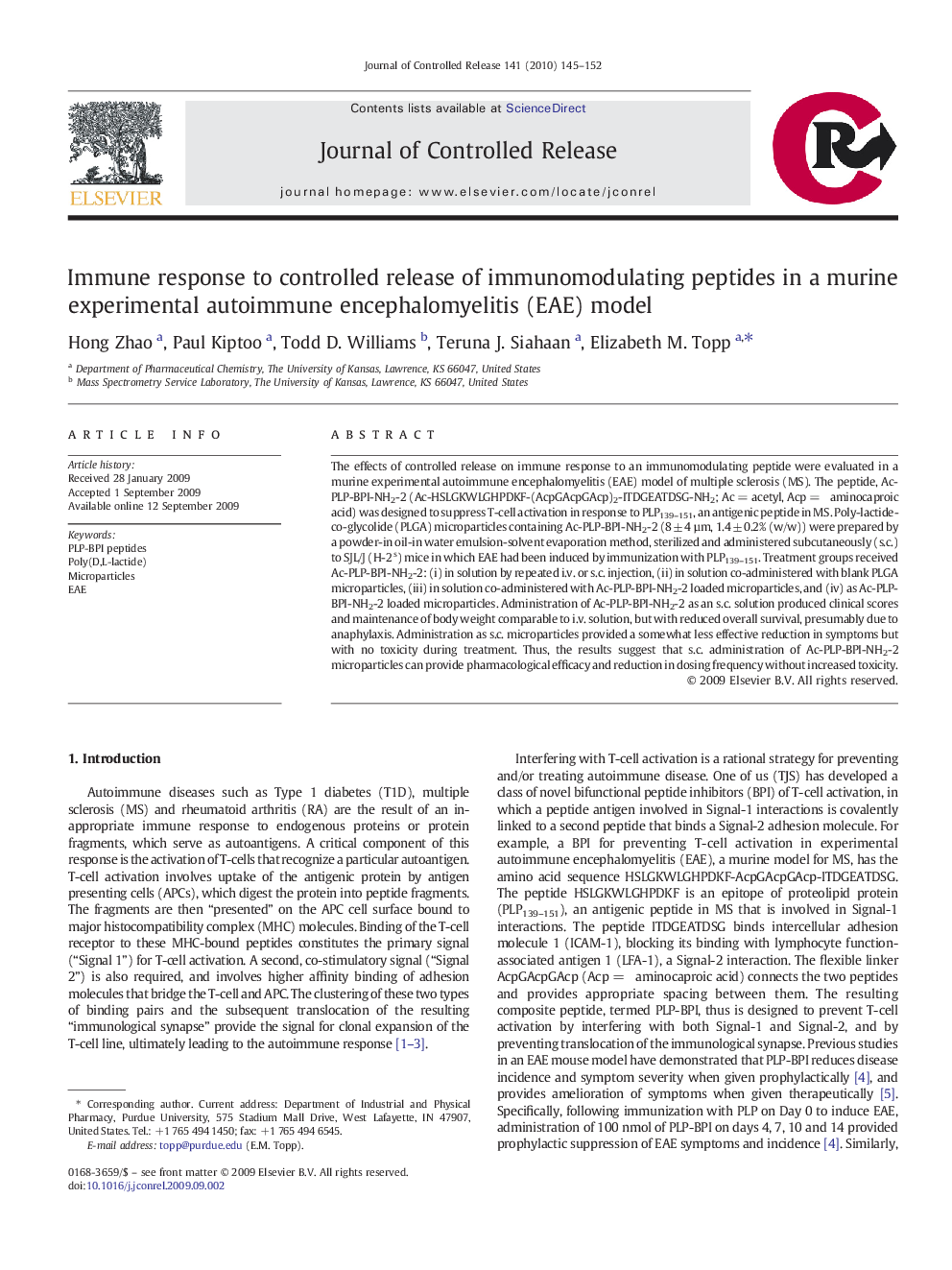| کد مقاله | کد نشریه | سال انتشار | مقاله انگلیسی | نسخه تمام متن |
|---|---|---|---|---|
| 1426009 | 986790 | 2010 | 8 صفحه PDF | دانلود رایگان |

The effects of controlled release on immune response to an immunomodulating peptide were evaluated in a murine experimental autoimmune encephalomyelitis (EAE) model of multiple sclerosis (MS). The peptide, Ac-PLP-BPI-NH2-2 (Ac-HSLGKWLGHPDKF-(AcpGAcpGAcp)2-ITDGEATDSG-NH2; Ac = acetyl, Acp = є aminocaproic acid) was designed to suppress T-cell activation in response to PLP139–151, an antigenic peptide in MS. Poly-lactide-co-glycolide (PLGA) microparticles containing Ac-PLP-BPI-NH2-2 (8 ± 4 µm, 1.4 ± 0.2% (w/w)) were prepared by a powder-in oil-in water emulsion-solvent evaporation method, sterilized and administered subcutaneously (s.c.) to SJL/J (H-2 s) mice in which EAE had been induced by immunization with PLP139–151. Treatment groups received Ac-PLP-BPI-NH2-2: (i) in solution by repeated i.v. or s.c. injection, (ii) in solution co-administered with blank PLGA microparticles, (iii) in solution co-administered with Ac-PLP-BPI-NH2-2 loaded microparticles, and (iv) as Ac-PLP-BPI-NH2-2 loaded microparticles. Administration of Ac-PLP-BPI-NH2-2 as an s.c. solution produced clinical scores and maintenance of body weight comparable to i.v. solution, but with reduced overall survival, presumably due to anaphylaxis. Administration as s.c. microparticles provided a somewhat less effective reduction in symptoms but with no toxicity during treatment. Thus, the results suggest that s.c. administration of Ac-PLP-BPI-NH2-2 microparticles can provide pharmacological efficacy and reduction in dosing frequency without increased toxicity.
Graphical AbstractFigure optionsDownload as PowerPoint slide
Journal: Journal of Controlled Release - Volume 141, Issue 2, 25 January 2010, Pages 145–152